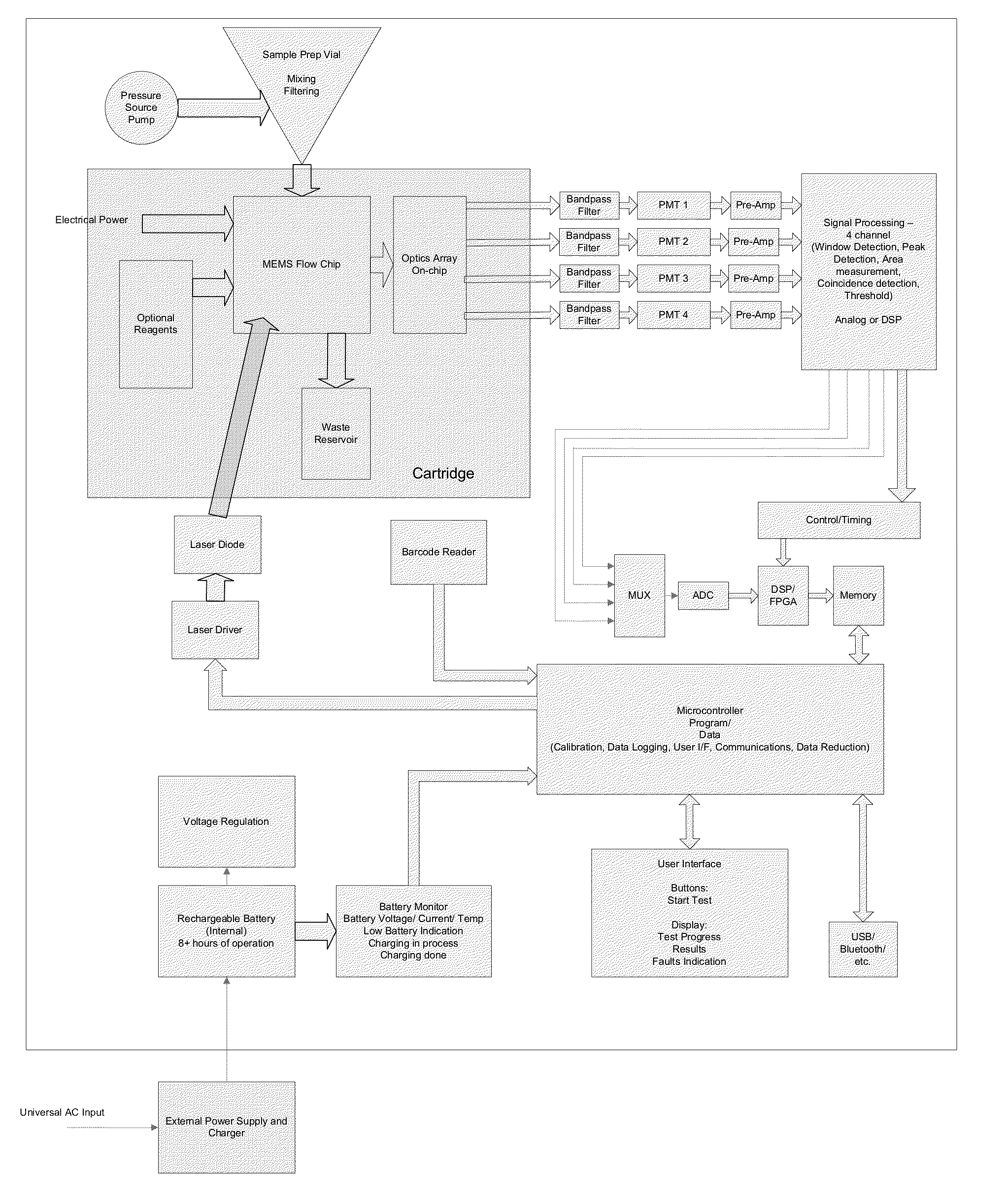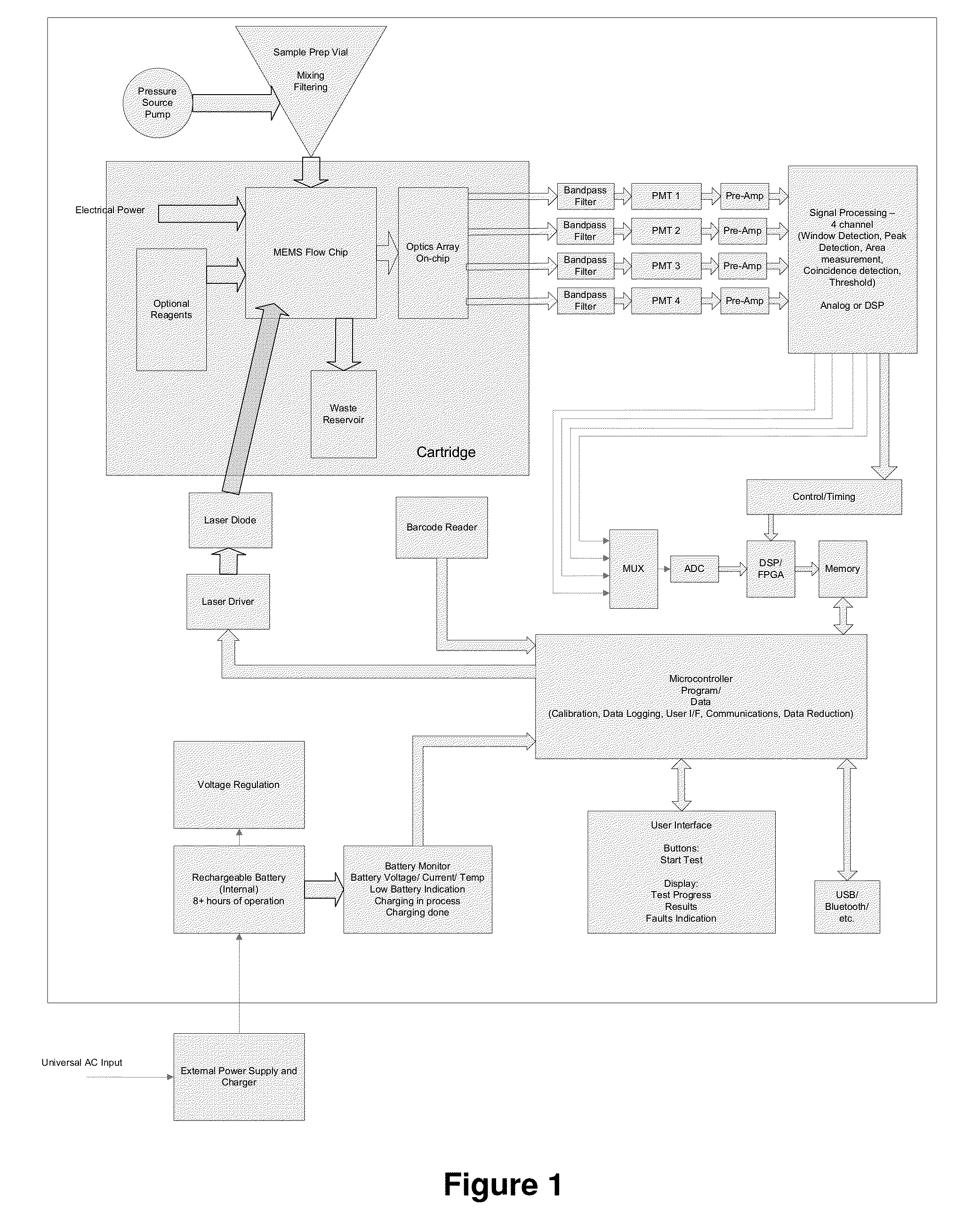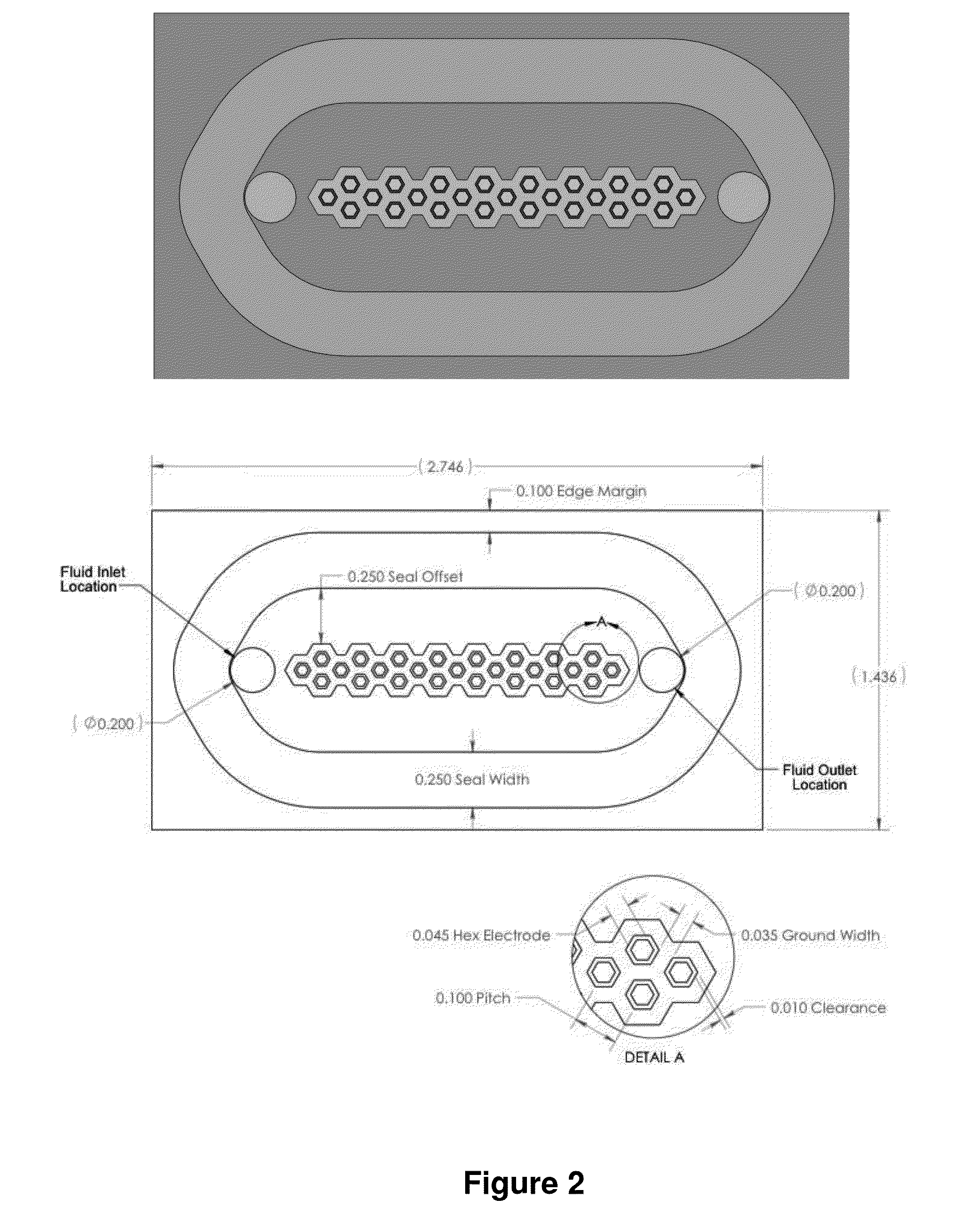Cervical cancer screening by molecular detection of human papillomavirus-induced neoplasia
a human papillomavirus and molecular detection technology, applied in the field of pointof-, can solve the problems of increasing false negatives, equivocal, and neither test alone is sufficient to detect both infection with high-risk hpv strains, and achieve the effect of facilitating detection of multiple markers
- Summary
- Abstract
- Description
- Claims
- Application Information
AI Technical Summary
Benefits of technology
Problems solved by technology
Method used
Image
Examples
Embodiment Construction
[0020]The following description sets forth exemplary methods, parameters and the like. It should be recognized, however, that such description is not intended as a limitation on the scope of the present disclosure but is instead provided as a description of exemplary embodiments.
[0021]The present disclosure is based on a disposable cartridge for the rapid molecular detection of multiple markers associated with cervical disease in a point-of-care setting. The primary focus of the test is on the detection of HPV-associated cervical disease, by detecting the presence of HPV and downstream cervical cell changes resulting from deregulated expression of HPV and cervical cell proteins. This combined approach to assessing the disease using multiple markers that arise at different stages of disease progression results in a test that has fewer false positives and fewer false negatives. This reduction in false positive and false negative results yields a test with significantly higher sensitiv...
PUM
| Property | Measurement | Unit |
|---|---|---|
| Area | aaaaa | aaaaa |
Abstract
Description
Claims
Application Information
 Login to View More
Login to View More - R&D
- Intellectual Property
- Life Sciences
- Materials
- Tech Scout
- Unparalleled Data Quality
- Higher Quality Content
- 60% Fewer Hallucinations
Browse by: Latest US Patents, China's latest patents, Technical Efficacy Thesaurus, Application Domain, Technology Topic, Popular Technical Reports.
© 2025 PatSnap. All rights reserved.Legal|Privacy policy|Modern Slavery Act Transparency Statement|Sitemap|About US| Contact US: help@patsnap.com



